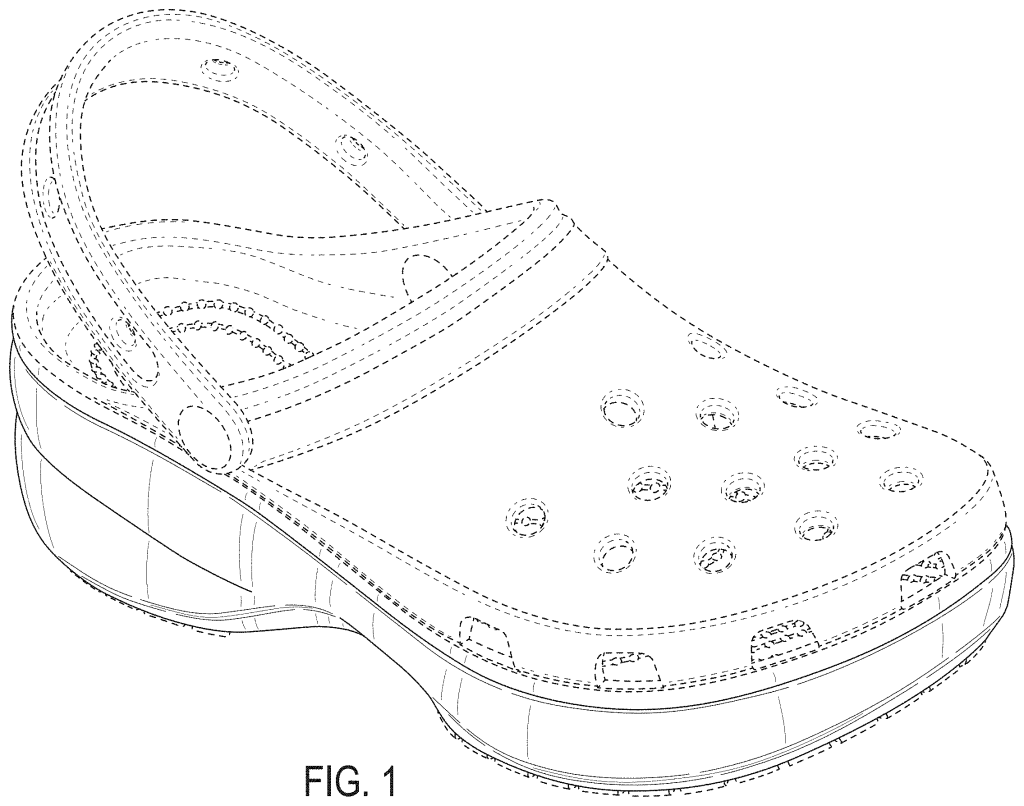The case before the Federal Circuit involves the consideration of the use of terms like “patented,” “proprietary,” and “exclusive” in commercial advertising under the Lanham Act.
The dispute centers on whether these terms, when not entirely accurate, can be actionable under the Lanham Act’s false advertising provision. The case originated in 2006 when Crocs sued Double Diamond and others for patent infringement.
In 2016, Dawgs counterclaimed against Crocs, alleging false advertising under the Lanham Act, asserting that Crocs falsely marketed its “Croslite” shoe material as “patented,” “proprietary,” and “exclusive.” Crocs moved for summary judgment, arguing that false claims about inventorship or authorship are not actionable under the Lanham Act.
The district court granted summary judgment for Crocs, concluding that Dawgs’ claim amounted to nothing more than an allegation that “Crocs falsely claimed it created Croslite.” Dawgs appealed, arguing that Crocs’ advertisements using the terms misled consumers about the nature and qualities of its footwear.
The appeal involves arguments over the application of the Dastar decision and its progeny.
Dawgs contends that the district court overextended Dastar by adopting a per se rule that terms like “patented,” “proprietary,” and “exclusive” can never be actionable under the Lanham Act.
At oral arguments, Judge Albright highlighted the point that by putting ‘it’s patented’ on it, Crocs was conveying a false message to consumers. The International Trademark Association (INTA) filed an amicus brief, urging the Federal Circuit to narrowly construe Dastar and reject any categorical bar on false advertising claims based on words like “patented,” “proprietary,” or “exclusive.”
The parties also disputed the implications of patent law’s false marking statute, with INTA arguing that it supports the notion that false claims about patent protection are actionable under the Lanham Act. Crocs, on the other hand, argued that the false marking statute undercuts Dawgs’s Lanham Act claim.
The parties also disagreed on whether the court properly considered evidence of false advertising and had excluded additional evidence. Professor Rebecca Tushnet argued that the district court likely erred because Crocs’ claims of patented and exclusive conveyed a false message to consumers about the characteristics of its products. She distinguished Dawgs’ claim from others, arguing that it is about falsely advertising a unique material.
The panel consists of Circuit Judges Reyna and Cunningham, alongside District Judge Albright sitting by designation. Matt Berkowitz argued for Double Diamond and Dawgs, while Michael Berta argued for Crocs, Inc.

This news is summarized and processed by the IP Topics artificial intelligence algorithm.
Read the full article on the original webpage: https://patentlyo.com/patent/2024/04/marking-advertising-overcoming.html
The cover image belongs to the source website and is used as an integral part of the summary of the reference article.